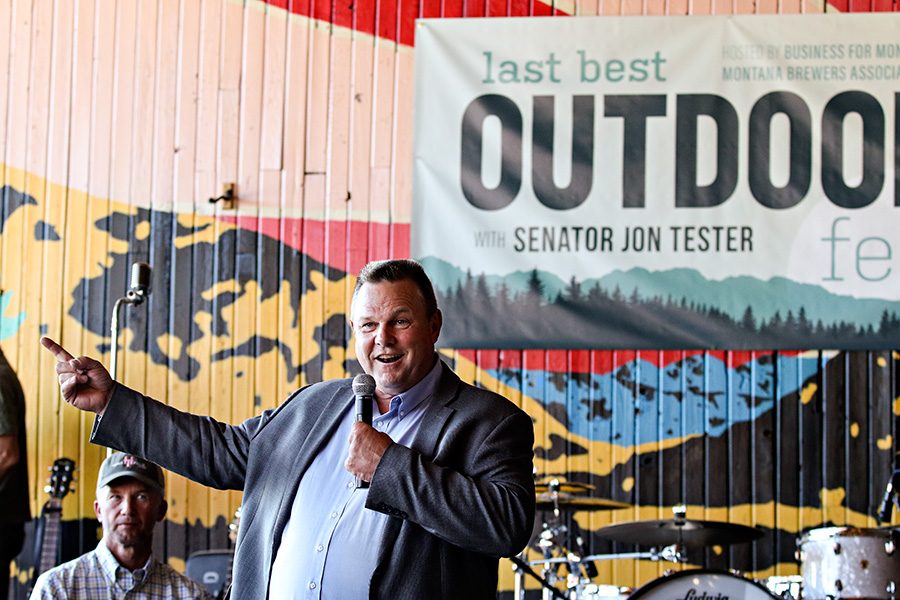COLUMBIA FALLS — For more than a century, the mountains that surround the Flathead Valley have inspired legions, from artists trying to capture the beauty on canvas to teenagers sharing the scenery through the perfect Instagram filter. But a new report suggests Montana’s scenic wonders are worth a lot more than a pretty picture.
“Montana’s public lands aren’t just for creating memories or snapping pictures for Facebook,” Sen. Jon Tester declared last week at an outdoors roundtable at the Cedar Creek Lodge, which was followed by a rally for public lands. “These lands bring $7.1 billion to the state’s economy every year, support 71,000 jobs and bring numerous new businesses and entrepreneurs here.”
Tester was referencing data published in a report by Headwaters Economics for the nonprofit Business for Montana’s Outdoors. The report noted that some of Montana’s fastest-growing counties are also close to federally managed public lands. Between 2000 and 2015, five counties — Gallatin, Yellowstone, Missoula, Flathead and Lewis and Clark — were responsible for 75 percent of the state’s job growth.
The report also stated that service jobs — everything from restaurant servers and raft guides to doctors and lawyers — vastly outnumbered construction, manufacturing and agricultural jobs, once the cornerstones of Montana’s economy. In 2015, service jobs accounted for 60 percent of the state’s labor earnings, whereas non-service jobs like construction and agriculture only accounted for 15.3 percent of labor earnings.
Since the 1970s, personal income from non-service jobs has remained flat, but personal income from service jobs has consistently grown. A number of speakers at the Aug. 22 Cedar Creek Lodge roundtable said this demonstrates that Montana’s recreational opportunities are now driving the economy, and they’re not just attracting tourists visiting for a long weekend.
“We can attract talent to this state because of where we live and the landscape that surrounds us,” said Ray Rasker, the author of the economic report. “Counties that have a lot of federal land have higher migration rates, higher growth rates and higher population growth rates.”
Ryan Busse, vice president of sales at Kimber America, a Kalispell-based rifle company, said access to public lands is one of the primary reasons the company is based in the Flathead Valley.
The roundtable, held prior to a community festival, had a number of prominent public land advocates, including hunter, outdoorsman and television personality Randy Newberg, professional skier and mountaineer Caroline Gleich, professional climber Conrad Anker and REI Community and Government Affairs Manager Taldi Walter. Representatives of Montana’s business community were also present. Newberg said any effort to reduce access or sell off public lands must be halted.
“Public land was an experiment in the 1800s and early 1900s, but now it is a proven model,” he said. “It is perhaps the best idea America has ever given to the world.”
Gleich, who is based in Salt Lake City but has recreated across the West and around the world, was critical of elected officials in Utah who have proposed to transfer public land ownership. In January, Republican Rep. Jason Chaffetz introduced legislation that called on the Department of the Interior to sell off 3.3 million acres of “excess.” Chaffetz later backed away from the proposal.
“Some of our elected officials in Utah don’t understand how much our economy depends on public lands,” she said. “Public lands bring us together, and I think we need that more than ever. Whether you’re a liberal or a conservative, a hunter or a hiker, we can all come together on the importance of public lands.”
